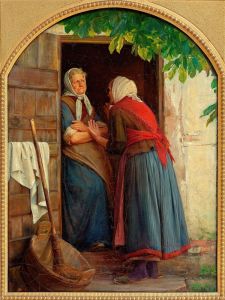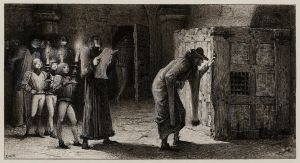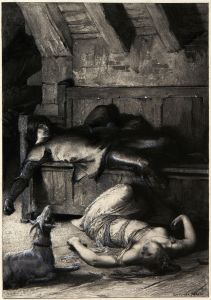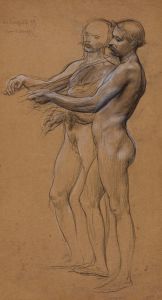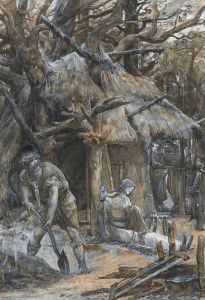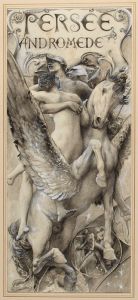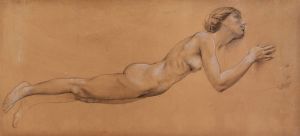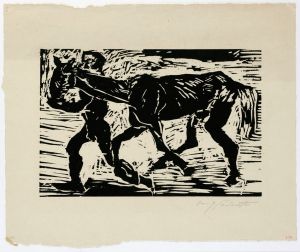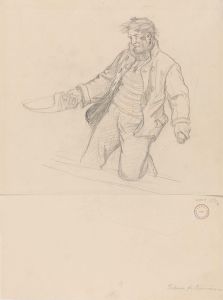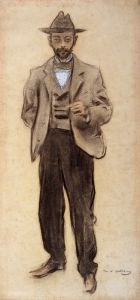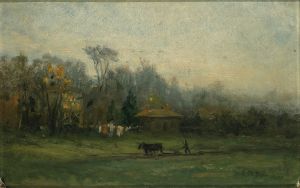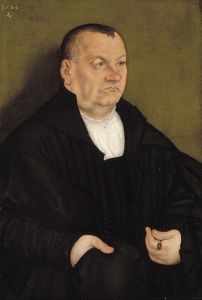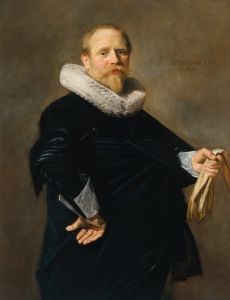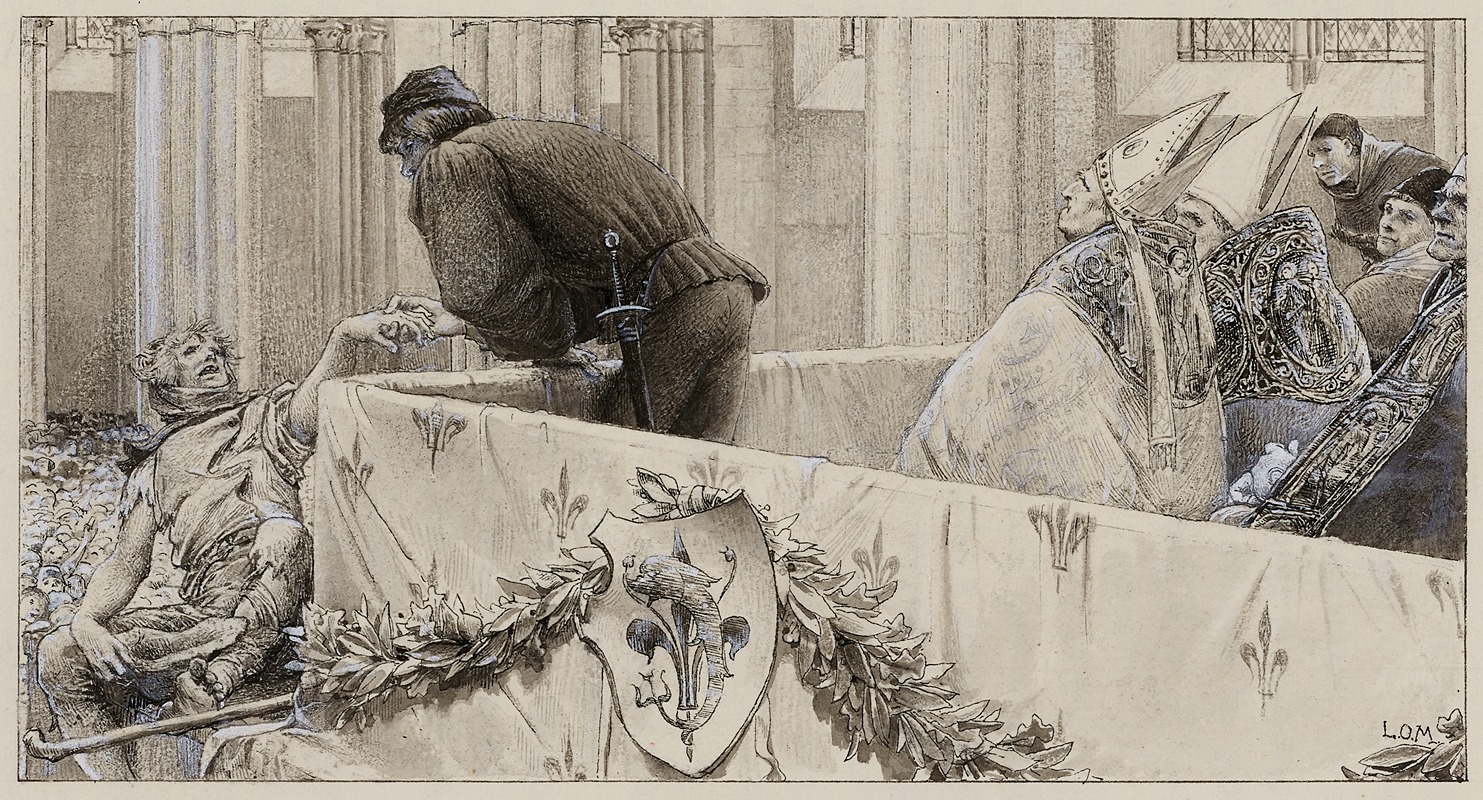
Maître Jacques Coppenole
A hand-painted replica of Luc-Olivier Merson’s masterpiece Maître Jacques Coppenole, meticulously crafted by professional artists to capture the true essence of the original. Each piece is created with museum-quality canvas and rare mineral pigments, carefully painted by experienced artists with delicate brushstrokes and rich, layered colors to perfectly recreate the texture of the original artwork. Unlike machine-printed reproductions, this hand-painted version brings the painting to life, infused with the artist’s emotions and skill in every stroke. Whether for personal collection or home decoration, it instantly elevates the artistic atmosphere of any space.
Luc-Olivier Merson's painting "Maître Jacques Coppenole" is a notable work that reflects the artist's interest in historical and literary subjects. Merson, a French academic painter, was known for his detailed and narrative-driven compositions, often drawing inspiration from literature, history, and mythology. This particular painting is based on a character from Victor Hugo's novel "Notre-Dame de Paris" (commonly known in English as "The Hunchback of Notre-Dame").
Jacques Coppenole is a fictional character in Hugo's novel, depicted as a Flemish hosier and a member of the delegation from Flanders visiting Paris. He is portrayed as a straightforward and honest man, contrasting with the more corrupt and pretentious figures in the Parisian court. Coppenole's character is significant in the novel for his role in the election of the "Pope of Fools," a scene that highlights the themes of social class and the folly of human pride.
Merson's painting captures the essence of Coppenole's character, focusing on his robust and unpretentious nature. The artist's attention to detail is evident in the careful rendering of Coppenole's attire, which reflects his status as a tradesman rather than a nobleman. The painting likely emphasizes the contrast between Coppenole's plainness and the opulence of the court, a theme that resonates with Hugo's critique of social hierarchies.
Luc-Olivier Merson was born in Paris in 1846 and became a prominent figure in the French art scene during the late 19th and early 20th centuries. He studied at the École des Beaux-Arts under the tutelage of artists such as Léon Cogniet. Merson's work was well-received in his time, and he was awarded the prestigious Prix de Rome in 1869, which allowed him to study in Italy. His style is characterized by a meticulous approach to composition and a penchant for historical and allegorical themes.
"Maître Jacques Coppenole" fits within Merson's broader oeuvre, which often explored literary subjects. His ability to translate the written word into visual form is a testament to his skill as a narrative painter. Merson's works were exhibited at the Paris Salon, and he gained recognition for his contributions to both painting and illustration. In addition to his easel paintings, Merson also worked on large-scale public commissions, including murals and stained glass designs.
The painting of Jacques Coppenole would have been appreciated not only for its artistic merit but also for its engagement with a well-known literary work. Victor Hugo's "Notre-Dame de Paris" was a significant cultural touchstone in France, and Merson's interpretation of one of its characters would have resonated with contemporary audiences familiar with the novel.
While specific details about the painting's current location or provenance might not be readily available, Merson's work remains an important part of the tradition of 19th-century French academic painting. His ability to convey complex characters and narratives through his art continues to be appreciated by art historians and enthusiasts alike.
In summary, Luc-Olivier Merson's "Maître Jacques Coppenole" is a fine example of the artist's narrative skill and his engagement with literary themes. Through his detailed and thoughtful portrayal of Hugo's character, Merson contributes to the rich tapestry of 19th-century French art that bridges the worlds of literature and visual art.





